Roswell, NM
Question: Has life from other planets visited Earth?
Answer: Some people say “yes’; the U.S. government says “no.”
In 1947, a farmer who lived 40 miles from Roswell found some unusual metal-like wreckage in his field. When he had a free day from farm work, he took the wreckage to the local sheriff for examination. Eventually, the wreckage was the subject of a U.S. government investigation that concluded the wreckage was a portion of a weather balloon. Years later, the government declassified the documentation from the investigation, revealing that the wreckage was from a U-2 test plane. The controversy over what the wreckage really was continues. Many people believe it was material from outer space, and witnesses provided affidavits describing the spacecraft and the living beings they had seen.
The UFO Museum and Research Center is an interesting place. The many exhibits include copies of the affidavits from the original Roswell event, newspaper articles, government documents, and scientific opinions, as well as cartoons, artwork, and displays featuring alien beings.

The UFO Museum has had over 3 million visitors.

This is one of the alien displays. Every 15 minutes, the “spacecraft” above spews red and green smoke as if it is taking off, lights flash, and other-worldly music plays.
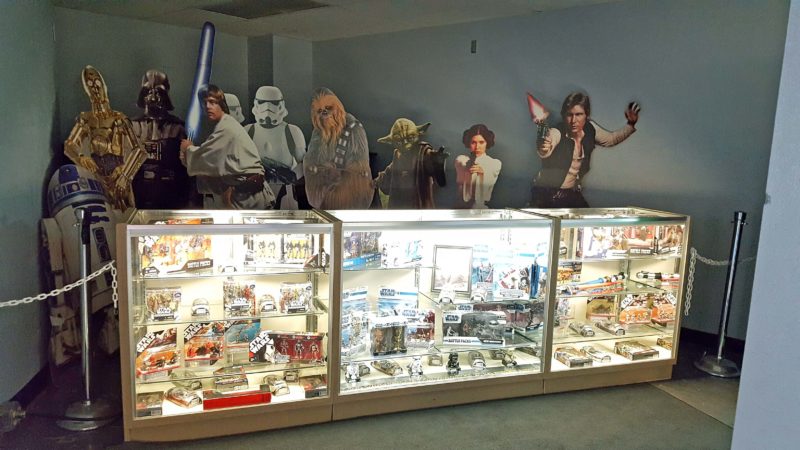
“Star Wars”–the ultimate modern alien culture.
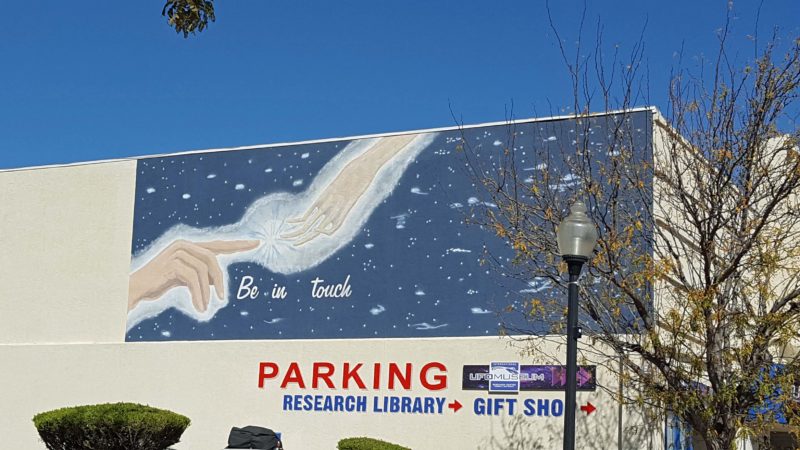
Remember E.T.? Roswell doesn’t forget.

Little green people are everywhere in Roswell. Here are two at a gas station.

Even Roswell’s street lights have an alien appearance.
Smokey, the bear
Question: Was Smokey, the bear, real?
Answer: The people say “yes.” The U.S. Government agrees. It made Smokey a representative of the U.S. Forest Service.
After our visit to the UFO Museum, Ted and I drove the Billy the Kid National Scenic Byway out of Roswell. It goes through Capitan, NM where Smokey Bear is buried. In 1950, some kids were playing with matches and started a huge forest fire. A five-pound, two-and-a-half-month-old bear cub was rescued from the fire and named Smokey. He was referred to as Smokey, the bear and his name later became Smokey Bear. (The old joke about “What is Smokey the Bear’s middle name?” is inaccurate because he didn’t have a middle name.) Smokey became the U.S. Forest Service spokesperson for fire safety. When he died, he was buried in Capitan, NM near the place where he was first rescued.
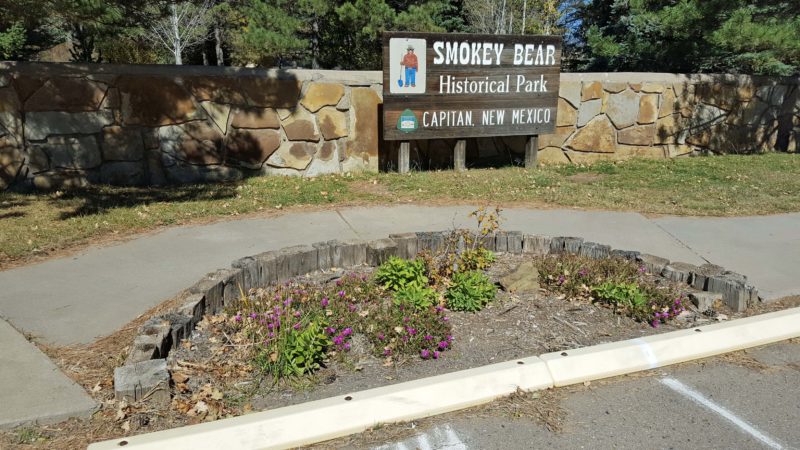
Smokey’s final resting place is in a very pretty little park in Capitan, NM.

Smokey with his well-known slogan.

Smokey is buried within this ring of rocks.
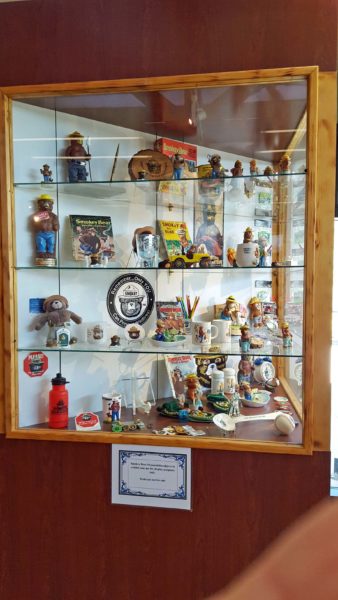
Of course, there are Smokey souvenirs available for sale.

And of course, Ted and I had our picture taken with Smokey.
Socorro, NM
Question: What’s out there in the universe?
Answer: Most people say “I’m not sure”; the U.S. government says “It’s worth a lot of money to find out.”
Ted’s and my last stop of the day was the Very Large Array, west of Socorro, NM. I can’t help wondering why the U.S. government is reluctant to accept citizens’ reports of UFO sightings, but is willing to spend a lot of money to find out what’s in outer space. The VLA cost $78.6 million to build in 1972 and $81.5 million to operate in 2016. I find it ironic that Roswell and Socorro are barely 200 miles apart.
There are three reasons this site was selected for the VLA:
- It is a 55-mile wide, flat plateau, allowing for easier movement of the 27 antennae on railroad tracks. They are moved four times each year.
- The plateau is ringed by mountains (I counted nine ranges on a map of New Mexico), and this eliminates man-made radio interference. (All electronic devices must be turned off when visiting the VLA. Digital cameras may be used.)
- The altitude of this site minimizes the blurring effect of the atmosphere.
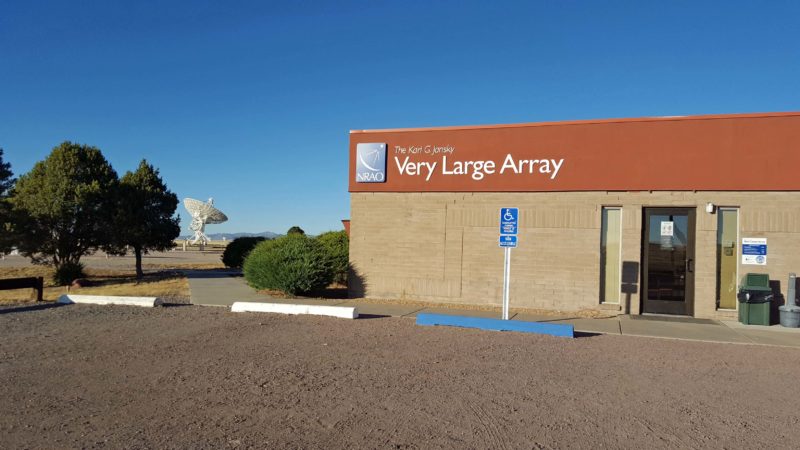
We have arrived at our destination: the VLA Visitor Center.

This antenna is just behind the visitor parking lot.

One of the first things we passed on the self-guided walking tour was an interesting sundial. It keeps time from 8:00 am-4:00 pm and has markings on the ground so that it even tells the date.
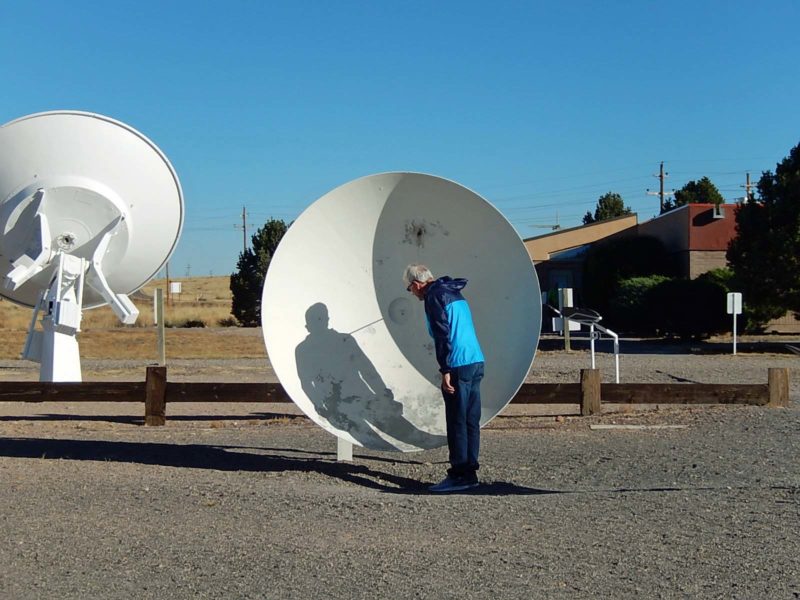
At the next stop on our walking tour, Ted and I had a chance to better understand how the VLA disks magnify radio waves. Two disks are set about 50 feet apart facing each other, and each has a narrow tube extending from its center. If Ted and I faced each other and shouted, we could barely hear each other, but if we whispered into our respective tubes, we could hear each other clearly. Ted is whispering into one of the disks. That was fun!

Each of the 27 antennae of the VLA is 94 feet high, has a diameter of 82 feet, and weighs 235 tons. Ted is my scale figure here.

This is the maximum number of antennae that fit in my camera viewfinder.